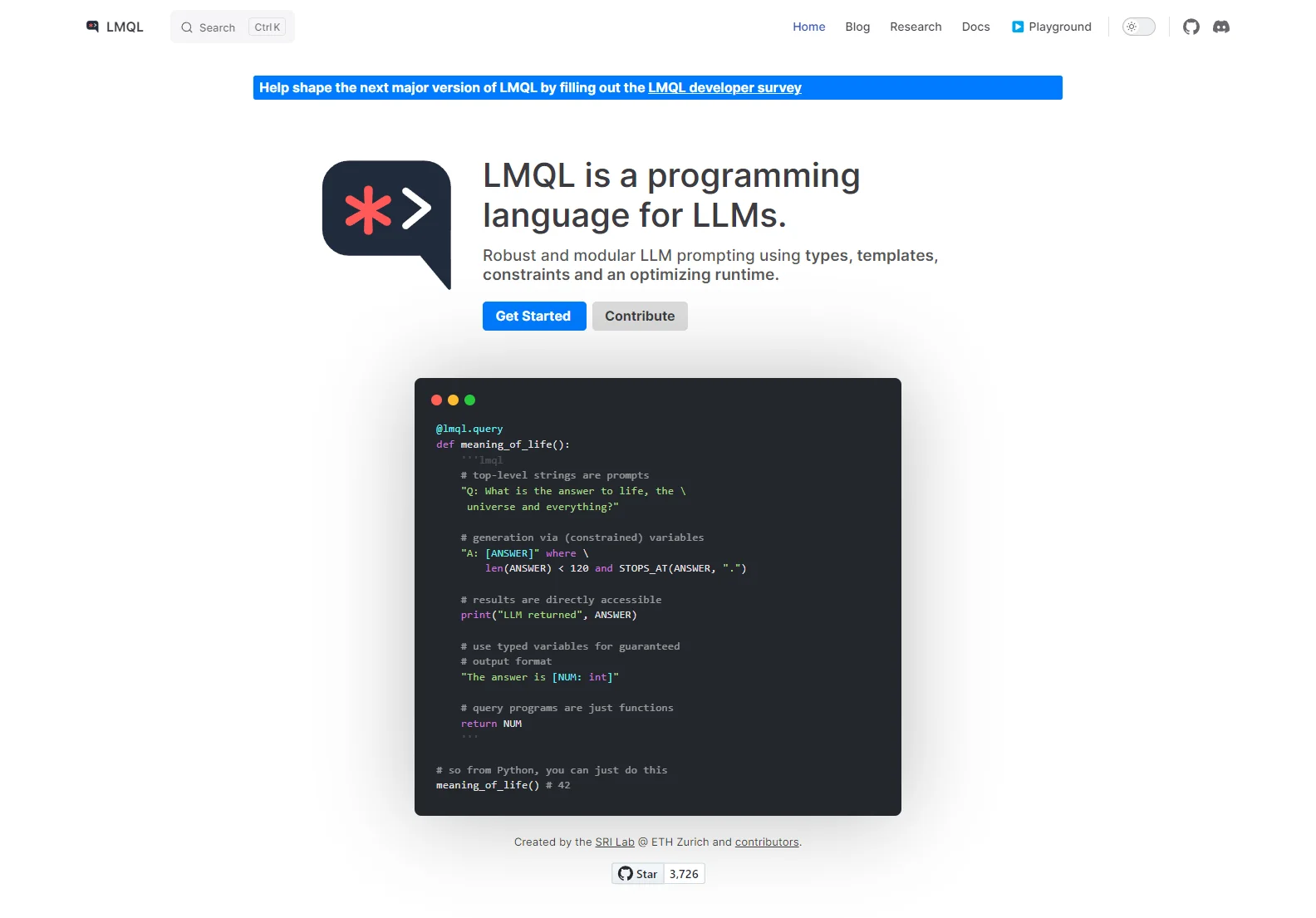LMQL: A Programming Language for LLMs
LMQL (Large Language Model Query Language) is a novel approach to interacting with large language models (LLMs). It's not just another prompting tool; it's a full-fledged programming language designed to make LLM interaction more robust, efficient, and accessible. Instead of crafting prompts manually, LMQL allows you to write programs that define prompts, manage constraints, and process the resulting outputs. This approach significantly enhances the control and predictability of LLM interactions.
Key Features of LMQL
- Typed Variables: LMQL uses typed variables to ensure that the LLM's output conforms to a specific format. This eliminates ambiguity and simplifies the processing of results.
- Templates and Constraints: Prompts are defined using templates, and constraints can be added to guide the LLM's response, ensuring it meets specific requirements (e.g., length, format, content).
- Optimizing Runtime: LMQL includes an optimizing runtime that improves the efficiency of prompt generation and execution.
- Nested Queries: LMQL supports nested queries, enabling modularity and the reuse of prompt components. This allows for the creation of complex, multi-step interactions with LLMs.
- Multi-Backend Support: LMQL is designed to work with various LLM backends, such as Llama.cpp, OpenAI's API, and Hugging Face Transformers. This ensures portability and flexibility.
- Python Integration: LMQL seamlessly integrates with Python, allowing developers to leverage Python's extensive libraries and control flow for more complex LLM applications.
Use Cases for LMQL
LMQL's capabilities extend to a wide range of applications, including:
- Complex Prompt Engineering: Constructing intricate prompts with multiple parts and constraints becomes significantly easier.
- Data Extraction and Transformation: Extract structured data from unstructured text using LLM-based methods.
- Chatbot Development: Create more sophisticated and interactive chatbots with improved control over the conversation flow.
- Automated Report Generation: Generate reports from data using LLMs, ensuring consistent formatting and accuracy.
- Research and Development: Explore new ways to interact with and utilize LLMs in various research domains.
Comparison with Other LLM Interaction Methods
Traditional LLM interaction methods often rely on manual prompt crafting, which can be time-consuming and error-prone. LMQL offers a significant advantage by providing a structured and programmatic approach. Unlike simple prompting libraries, LMQL provides a richer set of tools for controlling the LLM's behavior and processing its output. This makes it particularly well-suited for complex tasks that require precise control over the LLM's responses.
Conclusion
LMQL represents a significant advancement in the field of LLM interaction. Its unique combination of features makes it a powerful tool for developers and researchers seeking to harness the full potential of LLMs. The ability to write programs for LLMs opens up new possibilities for creating innovative and efficient applications.
